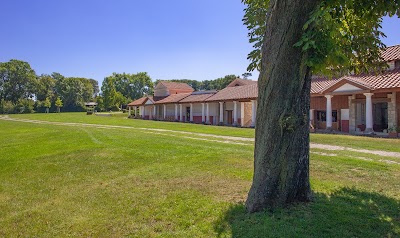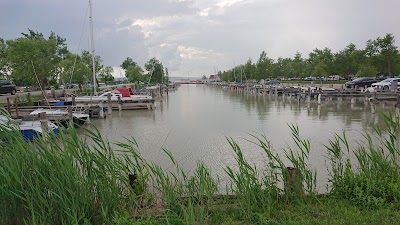Neusiedler See (Neusiedler See)
Overview
Lake Neusiedl, also known as Neusiedler See, is a captivating steppe lake primarily situated in Burgenland, Austria, with its waters extending into Hungary. This remarkable body of water is the largest endorheic lake in Central Europe, meaning it has no natural outflow. Its shallow depths, averaging just 1.5 meters (about 5 feet), foster a unique ecosystem that has intrigued researchers and nature enthusiasts alike.
Historical Significance
The history of Lake Neusiedl stretches back thousands of years, believed to have formed approximately 20,000 to 25,000 years ago during the last Ice Age. The lake's basin was sculpted by retreating glaciers, leaving a depression that gradually filled with meltwater and rainwater. This natural formation highlights the lake's organic development rather than a man-made creation.
Human activity around Lake Neusiedl can be traced to the Neolithic period, with ancient settlements revealing stories of communities thriving along its shores through hunting, fishing, and farming. Over centuries, the lake has significantly influenced the lifestyle and culture of the region's inhabitants.
Water Management Innovations
To preserve this stunning natural resource, innovative water management techniques were introduced in the 18th century. Various channels and dikes were constructed to control flooding and stabilize water levels, which were vital for supporting the region's agricultural activities, particularly its renowned viticulture.
Surrounding Lake Neusiedl are extensive reed beds, crucial for the lake's ecosystem. These reeds serve as natural water purifiers, filtering out pollutants and providing vital habitats for numerous bird species. As part of the Neusiedler See-Seewinkel National Park, a UNESCO World Heritage Site, the lake attracts birdwatchers and nature lovers from across the globe, celebrating its ecological and cultural significance.
Fishing and Recreation
The lake's nutrient-rich waters support a diverse fish population, making it a favored location for fishing enthusiasts. Common species include pike, perch, and various types of carp, with fishing traditions passed down through generations, fostering a harmonious balance between nature and human activity.
Tourism has flourished around Lake Neusiedl, significantly contributing to the regional economy. Its picturesque landscapes and a plethora of recreational activities draw visitors year-round. From boating and windsurfing in the warmer months to ice skating on its frozen surface in winter, the lake offers a diverse range of experiences for outdoor enthusiasts.
Winemaking Heritage
The region surrounding Lake Neusiedl is also celebrated for its winemaking. The unique microclimate and soil conditions created by the lake are perfect for grape cultivation. The area is particularly notable for its high-quality white wines, especially those made from the Grüner Veltliner and Welschriesling grape varieties.
Cultural traditions around the lake are rich and diverse. Festivals celebrating the wine harvest, local craftsmanship, and regional cuisine are abundant. One of the standout events is the Neusiedler See Carnival, a lively celebration that showcases the area’s heritage through music, dance, and vibrant parades.
Environmental Challenges
However, environmental concerns have emerged due to climate change and human activities. Rising temperatures and shifting precipitation patterns have impacted water levels, posing challenges for both the ecosystem and local communities. Ongoing conservation efforts aim to balance ecological preservation with sustainable development.
Modern scientific studies and monitoring programs focus on understanding the impacts of these changes. Researchers are investigating methods to protect the reed beds, ensure water quality, and maintain the biodiversity that makes Lake Neusiedl so unique and cherished.
In summary, Lake Neusiedl remains a natural treasure for both Austria and Hungary. Its preservation is essential not just for ecological health but also for sustaining the cultural and economic vitality of surrounding communities. Through historical knowledge, innovative practices, and community engagement, Lake Neusiedl continues to thrive as a vibrant part of the region's landscape.









